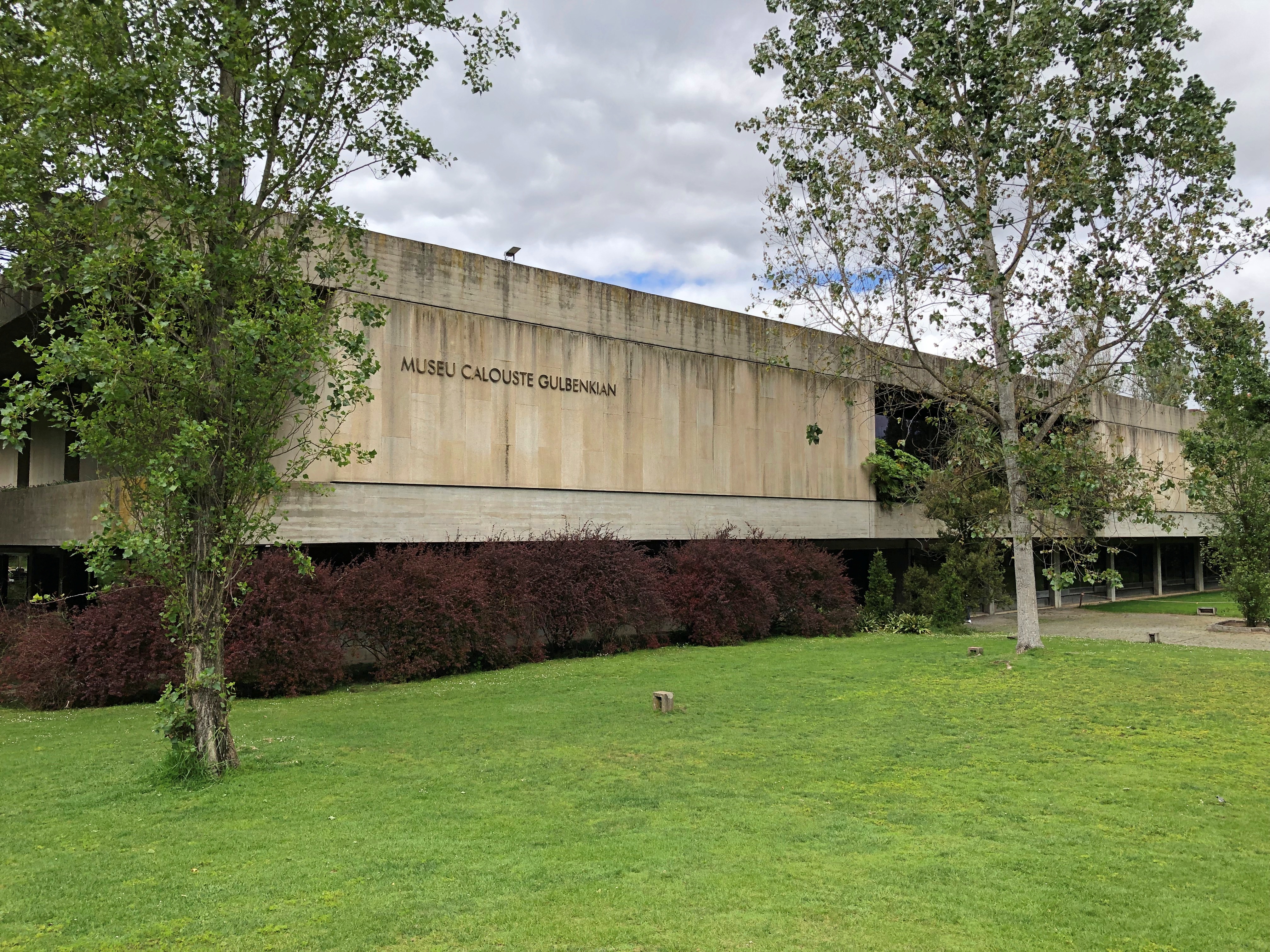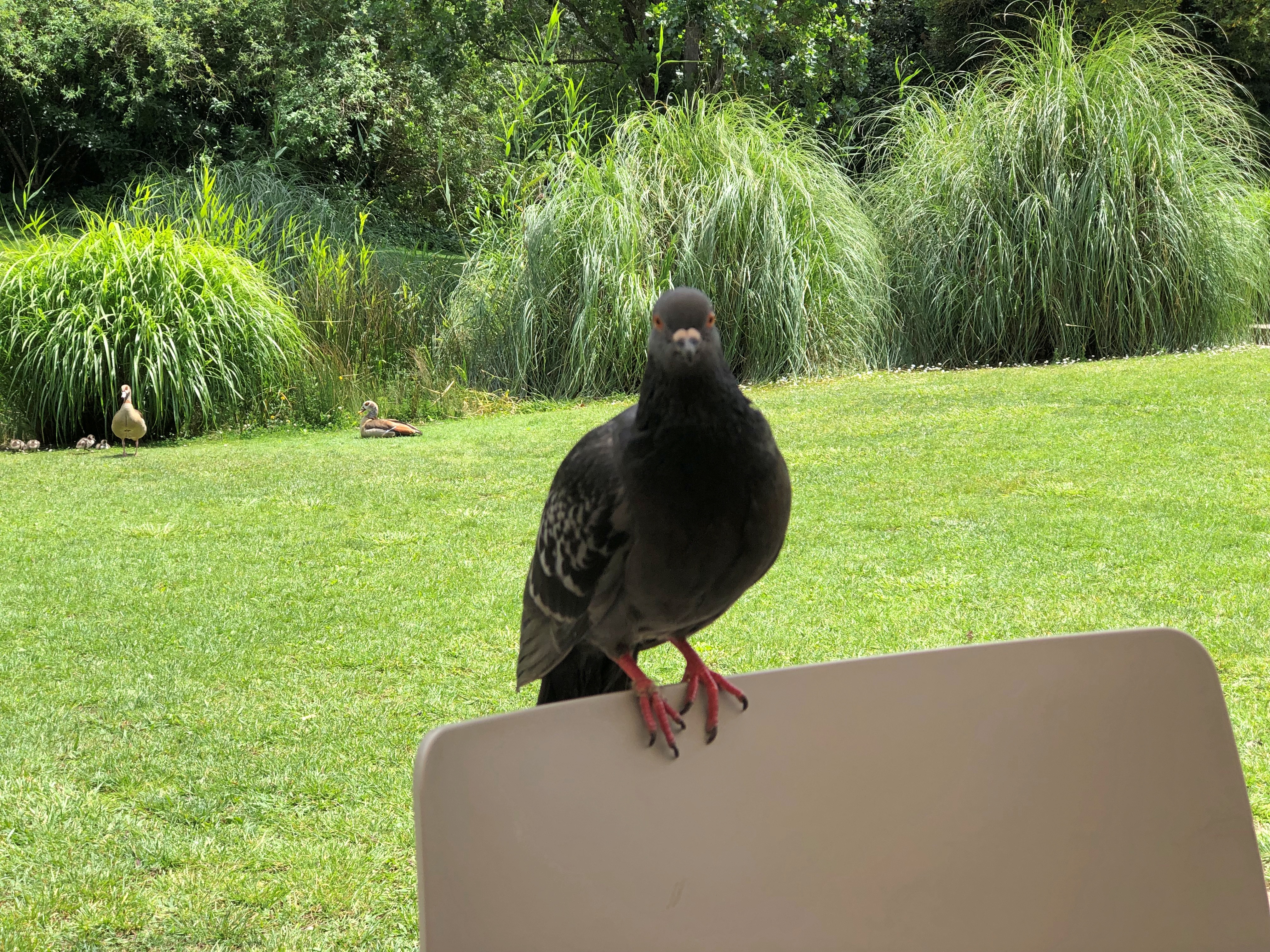On the day after much climbing around the Sintra hills, that is, Friday, May 17, the idea of visiting the Calouste Gulbenkian Museum and the surrounding Calouste Gulbenkian Garden had a lot going for it. A reportedly great collection of art, for one thing, in a vivid green park. Just as important, it was walking distance from our hotel. A fairly short walking distance, with the interlude of a leisurely brunch on the way. Our last full day in Portugal was going to be leisurely.
There are pancakes, as you might find in North America, but under the meat and eggs, a position that’s less common over here. Good pancakes too. Considering the cost of living in Portugal and the relatively strong dollar vs. the euro, we enjoyed high-quality breakfast food at IHOP prices.
Much has been written about the oilman Calouste Gulbenkian (d. 1955) elsewhere, for feats of industrialism and a colossal amount of philanthropy. Then there was the matter of collecting art, which he did with both hands.
Apparently he liked Lisbon a great deal, and who wouldn’t, especially after Paris got too hot in 1940. Much earlier, he and his family escaped Ottoman persecution, so while you can’t call such a wealthy fellow a refuge, he did feel the need to flee occasionally, along the way evolving into a shadowy British-Armenian billionaire with a massive art collection. These days, his artwork is in the museum named for him in Lisbon, developed by his posthumous foundation.
“When it comes to sheer diversity enhanced by the highest of standards, then the Gulbenkian Museum in Lisbon is in a category of its own,” the NYT reported in 1984. “Its collections range from art of the ancient Greeks to the Impressionists, from Iznik faience to Jacob armchairs made for Marie Antoinette, with a goodly complement of carpets, coins, tapestries, ivories and illuminated manuscripts thrown in…
“Unlike most other museums (the Frick is a significant exception), the physical plant has been designed to fit the collection, rather than the other way around. There are vast halls for carpets, and small rooms for silver, vitrines designed so that objects can be seen from every side, and all in such a way that nothing ever looks crowded. The light, too, is unusually good.”
The description is still accurate. The variety doesn’t hit you until you’re past a half-dozen galleries, but then it hits all at once. The aesthetic appetite of this oilman emulator of Le goût Rothschild spanned centuries and continents, and he had the means to act on it.
Among other things, I spent quality time with his ancient coin collection. Gulbenkian had examples from all around the Greek world in the first few centuries after the invention of coinage in Lydia. He had some from Lydia itself; some of the first coins ever.
A good number of Near Eastern carpets were on display, some near the floor lying flat and lightly roped off. To my eye, flawless works. They gave me the opportunity to pass along the idea (to Ann) that certain carpet markers of yore, perhaps Persians, deliberately included a small imperfection in their work because only God is perfect. Something I heard years ago, I don’t know where, and I can’t vouch for its accuracy, caveats that I also passed along. I’m not the only one to wonder.
The Gulbenkian Foundation complex, including the museum, didn’t open until until more than a decade after his death, and pretty much screams 1969.
The garden, lush in an Iberian May, takes some of the edge off the brutalism.


We visited the museum first, then strolled the garden afterward.


The museum includes an indoor-outdoor cafe, where we stopped for pastries late in mid-afternoon, sitting outside.
Note the birds. They were not afraid of people.

Not at all.
